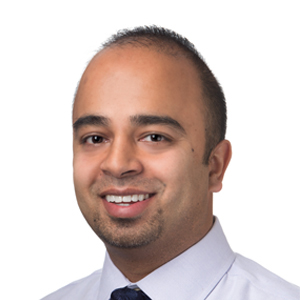
Endoscopic submucosal dissection (ESD), a minimally endoscopic technique to remove early gastrointestinal tumors, can be performed as safely and effectively as alternative techniques and is associated with high rates of curative resection and lower cancer recurrence, according to findings from a national multicenter study published in Gastroenterology.
“Prior studies have predominantly been from Asian countries, specifically in Japan, and they’ve demonstrated that endoscopic submucosal dissection is the preferred resection method for early gastrointestinal cancer or dysplastic lesions compared to either endoscopic mucosal resection or surgery,” said Abdul Aziz Aadam, MD, associate professor of Medicine in the Division of Gastroenterology and Hepatology and a co-author of the study, and noted that this study was the first to examine patient outcomes in North America.
For gastrointestinal cancers, standard course of treatment involves surgery followed by additional therapeutic interventions. For tumors that are diagnosed early, treatment involves either removing the tumor in one single piece with an endoscopic submucosal dissection (ESD) or removing it in multiple pieces with an endoscopic mucosal resection (EMR) procedure.
Removing a gastrointestinal tumor with ESD offers several advantages, according to Aadam, such as providing a more accurate pathological analysis of the tumor’s lateral margins (regions around the tumor) and deep margins (regions directly underneath the tumor), as well as serving as an alternative procedure to more invasive surgery.
For the current study, the investigators studied outcomes from patients who underwent ESD in 10 health centers across the United States over a period of four years. Patients received the procedure specifically for tumors located in the esophagus, stomach, duodenum, colon and rectum.
Of the 700 patients analyzed, curative resection was performed in 78 percent of patients and only one patient experienced any adverse events and required additional surgery. Additionally, the overall recurrence rate was six percent after an average follow-up time of 13 months.
“With EMR, the outcomes are very good, but it’s the recurrence rate of anywhere from 15 to 20 precent specifically in the colon and rectum that can be sometimes problematic. Typically, those recurrences can be removed endoscopically, but it does require more repeat procedures, whereas for ESD the recurrence rate is remarkably very low,” Aadam said.
As for next steps, Aadam said the team will evaluate patient outcomes after three to five years after their initial procedure.
“With wider dissemination of ESD, the question is whether we can still maintain high-quality thresholds and also show strong outcomes on a long-term basis,” Aadam said.






